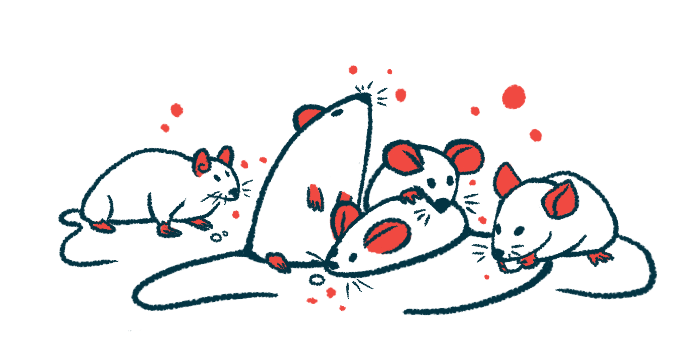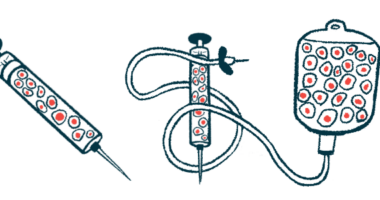New stem cell findings point to better healing in mouse model
Cord blood stem cells eased swelling, prevented digit deformities in RDEB mice

Stem cells from umbilical cord blood may help prevent finger and toe deformities caused by recessive dystrophic epidermolysis bullosa (RDEB) by reducing inflammation and supporting skin repair, according to a study in a mouse model of the disease.
To explore a way to better protect the skin’s barrier, the researchers used human unrestricted somatic stem cells. These stem cells are not directly identifiable from umbilical cord blood, and can turn into multiple types of cells, including those of the skin.
“This study [provides] compelling support for future clinical investigations involving [unrestricted somatic stem cells] as a potential therapeutic approach in patients with refractory [difficult-to-treat] RDEB,” the researchers wrote.
The study, “Inflammatory modulation by cord blood stem cells prevented digit deformation in recessive dystrophic epidermolysis bullosa,” was published in Molecular Therapy by a team of researchers in the U.S. and Germany.
How RDEB affects the skin
RDEB is a type of epidermolysis bullosa, a rare disease that makes the skin so fragile that even a light touch can cause painful blistering and wounds. Over time, repeated injury leads to scarring that can cause the fingers and toes (digits) to fuse together. This is known as pseudosyndactyly.
In this study, the researchers injected unrestricted somatic stem cells from the human umbilical cord into mice mimicking symptoms of RDEB. These mice produced little (C7hypo) or no type VII collagen, a protein that helps anchor the skin in place. In RDEB, this protein is missing or does not work as it should.
The researchers focused on C7hypo mice, which often develop shortened, fused digits after one month. In this study, some mice developed swelling in the front paws by one week. The swelling enlarged the digits and wrists, and the skin thickened, leading to severe paw deformities.
One week after treatment with stem cells, C7hypo mice showed significant improvements in digit and wrist measurements. Imaging confirmed the injected stem cells reached the paws. Their skin was less stiff and inflamed than in mice injected a placebo, with more loosely arranged, multidirectional collagen fibers, a pattern similar to healthy skin.
Moreover, their wounds healed better, they moved more easily, and they lived longer. The stem cells also helped the body produce new type VII collagen and changed the behavior of macrophages. These immune cells can either promote inflammation or help with healing, and the stem cells appeared to shift them toward the healing role.
The stem cells also affected specific molecules that control inflammation, such as IL-1alpha. In untreated mice, the balance between IL-1alpha and its natural blocker, IL-1Ra, was uneven, leading to excessive inflammation. The stem cells helped restore the balance, in part by releasing a signaling molecule called leukemia inhibitory factor (LIF).
“LIF emerged as a key immunomodulator, simultaneously suppressing [IL-1alpha] and enhancing IL-1Ra,” the researchers wrote. “Beyond regulating IL-1 signaling, LIF also functions to modulate inflammation, promote regenerative wound healing, and regulate stem cell renewal.”
“This study highlights [unrestricted somatic stem cells] as a promising candidate for cellular therapy in patients with RDEB,” the researchers added, though “addressing the underlying immune dysregulation will require combinational immunomodulatory therapies to optimize and improve the therapeutic response.”







